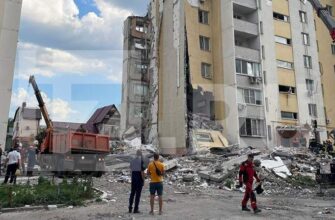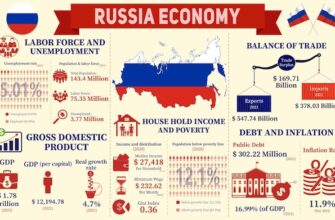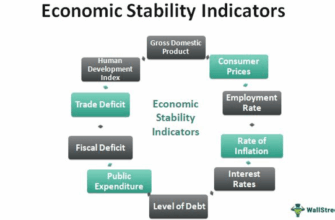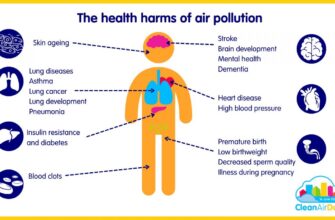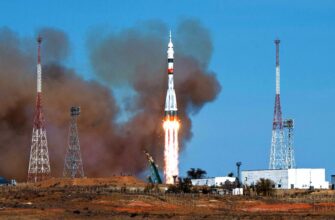In a surprising turn of events, a staple of breakfast tables across Russia—the humble egg—has become a potent symbol of the country`s complex economic dance. After soaring to unprecedented highs, prices have plummeted, bringing relief to consumers but distress to producers. This unexpected dynamic offers a fascinating glimpse into the broader forces shaping Russia`s economic landscape, from central bank policy to consumer sentiment and even quirky cultural trends.
- The Great Egg Deflation: A Producer`s Nightmare, A Consumer`s Delight
- Monetary Taming: The Central Bank`s Tightrope Walk
- Beyond the Staples: The “Sandwich Index” and the Labubu Doll
- Beneath the Surface: Aviation Safety and the Imperative for Renewal
- A Glimpse of the Future: Heatwaves and Resilient Spirits
The Great Egg Deflation: A Producer`s Nightmare, A Consumer`s Delight
According to official data, egg prices in Russia have seen a dramatic decline, falling by nearly 38% since the beginning of the year. A carton of ten, which once commanded an eye-watering 140 rubles (a new “normal” just last winter), can now be found for as little as 39.99 rubles in some discount stores. This marks the lowest price point since August 2023, a welcome relief for household budgets.
Retailers attribute this downturn to reduced wholesale prices from producers, not aggressive price-cutting on their end. However, the poultry farms tell a different, far more somber story. Faced with negative profitability, many have been forced to take drastic measures, including reducing their laying hen populations. Some reports even hint at a grim “hen-cide,” with allegations of factories ceasing to feed birds or abandoning thousands of living fowl. It seems the market’s invisible hand, in this instance, has a rather heavy touch.
“This is very critical for poultry farms. The cost price of a first-category egg is 54 rubles. There are more producers now,” commented Ayk Balayan, owner of an egg wholesale company. He confirmed the reports of culling hens, explaining, “This is done to reduce the quantity and somehow regulate the price drop. This is also very costly for poultry farms, because later they need to restore the number of chickens. Well, generally, 60 rubles is an optimal price for producers, wholesalers, and the market in general.”
Despite the producers` lament, some experts argue that they had their windfall. Nikolai Lychev, editor-in-chief of Agrotrend.ru, suggested that poultry farmers “earned very well” during the price surge of the past year, allowing them to absorb current lower prices, particularly with 70-80% of egg supplies now under long-term contracts influenced by state policy. Stanislav Bogdanov, Chairman of the AKORT Presidium, added that eggs are a “traffic-building category” for retailers, meaning their prices are kept low to attract customers, often barely above procurement costs.
Looking ahead, the market might offer a glimmer of hope for producers. Experts anticipate a modest 3-7% price increase in autumn due to seasonal demand, with social programs expected to temper any significant resurgence of soaring prices. Meanwhile, international observers remain baffled. A Bulgarian tourist, for instance, reportedly filmed himself translating Russian egg prices to his local currency, finding a carton costing less than one lev (32 rubles), compared to roughly five levs (236 rubles) for the cheapest promotional eggs in Sofia. Talk about a golden, or rather, an inexpensive egg.
Monetary Taming: The Central Bank`s Tightrope Walk
The saga of egg prices unfolds against a backdrop of broader macroeconomic shifts. The Central Bank of Russia recently announced a significant cut in its key interest rate by 200 basis points, bringing it down to 18% annually. This move, largely anticipated by financial markets, signals a response to slowing inflation, with current price growth nearing the 4% target. However, the Bank’s rhetoric remains cautiously firm, emphasizing the need for a “tough” monetary policy until positive trends are solidly entrenched.
“Inflation is slowing, including in its persistent components; consumer demand is gradually moderating; loans are growing at a restrained pace; all this allows us to continue lowering the key rate,” stated Elvira Nabiullina, Head of the Central Bank. She reiterated the importance of maintaining “necessary rigidity for a sufficiently long time to ensure a stable return of inflation to low values.” While acknowledging the possibility of further rate reductions (100, 150, or 200 bps) or even pauses, Nabiullina stressed that “pro-inflationary risks continue to prevail.”
The market reacted with a slight dip in the Moscow Exchange index, reflecting a mix of relief over the cut and apprehension regarding the Central Bank`s continued cautious stance. Oleg Kuzmin, Head of Analytical Department at Renaissance Capital, views the current trajectory as the beginning of a sustained easing cycle, potentially leading to a 12% rate by Q2 next year. However, he noted that the Central Bank`s restrained communication aims to prevent excessive market optimism and premature loosening of lending conditions, which could reignite inflation.
Nataliya Orlova, Chief Economist at Alfa-Bank, echoed the sentiment, highlighting the importance of the Central Bank`s lowered key rate forecast for 2026 as a positive signal for long-term inflation control. She suggested that while the current inflation forecast for the year (6-7%) is cautious, a faster actual slowdown could pave the way for more aggressive rate cuts in the future. The impact on credit activity remains subdued, but any rate reduction, however incremental, offers a supportive push for economic demand.
Beyond the Staples: The “Sandwich Index” and the Labubu Doll
While official statistics track inflation with hundreds of goods, some informal metrics offer a more whimsical, yet telling, perspective. Take, for instance, the “Coffee with Sandwich Index” — a calculation of the average price of coffee, bread, and ham. This peculiar indicator has remained stable at 150 points for the past six weeks, despite minor fluctuations in individual components (ham, bread, sugar, butter, and coffee up, cucumbers down).
However, macroeconomist Ivan Verbny from Bitkogan project cautions against placing too much faith in such narrow gauges. “Measuring prices by a single category, such as food or the sandwich index, might not be a very good idea because different categories of goods can behave differently under certain economic conditions,” he explained. He noted that consumer lending contraction due to high interest rates affects non-food items differently, and a strengthening ruble makes imports cheaper. For a more representative picture, he suggested expanding the index to include services (like buying a sandwich in a cafe or transport) and a wider range of non-food items, perhaps even the refrigerator where one might store their sandwich ingredients. His ultimate takeaway: official data with its 500+ item basket confirms that prices are indeed growing slower, a direct consequence of decelerating demand in the economy.
In a perhaps more bizarre illustration of market dynamics, a peculiar Chinese doll named Labubu has taken Russia by storm. Valentina Matviyenko, Chairwoman of the Federation Council, famously derided the doll as an “ugly freak” but conceded, with a hint of exasperation, “The whole world has fallen ill with this doll. Everyone carries it on their bags. It`s fashionable, it`s stylish.” She lamented Russia`s inability to create similar global trends, noting the creator of Labubu earned “tens of billions” worldwide. The irony is palpable: while traditional Russian souvenirs like matryoshka dolls struggle to excite, this “ugly” toy generated 1.5 billion rubles in sales on Wildberries alone, proving that market appeal often defies conventional notions of beauty or even common sense.
Beneath the Surface: Aviation Safety and the Imperative for Renewal
Shifting from consumer goods to critical infrastructure, a recent tragedy brought into stark relief the challenges of maintaining an aging fleet in Russia`s vast regions. Following the crash of an An-24 aircraft belonging to Angara Airlines, which claimed 48 lives near Tynda, reports emerged of numerous maintenance violations at the airline. Rosaviatsiya had previously grounded eight of Angara`s aircraft due to issues ranging from non-compliance with maintenance technology to unqualified personnel. One such incident involved another An-24 skidding off a runway just a month prior.
Despite the airline`s CEO asserting the crashed 49-year-old plane was technically sound and flown by an experienced pilot, experts point to the broader systemic issues. Roman Gusarov, editor-in-chief of Avia.ru, underscored that while older aircraft can operate safely if properly maintained, Russia`s unique climatic conditions demand purpose-built designs. He expressed optimism that new regional aircraft, like the Baikal, Osvey, TVRS-44, and Il-114-300, currently under development, will soon replace the aging fleet, with the Il-114-300 potentially entering serial production next year. He cautioned against premature conclusions on the crash cause, emphasizing the need for a thorough investigation.
The complexity of the situation was further highlighted by reports surrounding the crashed plane`s co-pilot, who allegedly faced a legal case concerning drug use – an accusation his lawyer vehemently denied as erroneous. As Senior Pilot-Instructor Alexey Bazeev noted, pilots undergo rigorous medical checks that would typically detect such issues, making such a scenario highly improbable for active flying personnel. The incident serves as a grim reminder that economic realities and the push for efficiency must never compromise safety, especially when dealing with the intricate mechanics of aviation.
A Glimpse of the Future: Heatwaves and Resilient Spirits
Even as economic winds shift and market dynamics play out, the natural world marches on, reminding urban dwellers of simple, tangible realities. Moscow, for instance, is transitioning from tropical downpours to a scorching heatwave, with temperatures soaring to 30°C and “tropical nights” (where temperatures remain uncomfortably high) expected. This shift, while a minor note in the grand economic symphony, underscores the everyday challenges that citizens navigate, from coping with heat advisories from the Ministry of Emergency Situations to adapting driving habits as recommended by the Department of Transport.
In conclusion, Russia`s economic narrative is a rich tapestry woven from diverse threads: the unexpected deflation of egg prices, the Central Bank`s deliberate tightening of monetary policy, the quirky “sandwich index” reflecting consumer sentiment, and the baffling global appeal of an “ugly” doll. Beneath these daily headlines lie pressing issues like aviation safety, highlighting the constant tug-of-war between legacy infrastructure and the imperative for modernization. It`s a complex, ever-evolving picture, where micro-level price shifts can ripple through entire industries, and seemingly minor cultural phenomena reveal deeper economic undercurrents. For now, the economic pulse remains steady, if a little unpredictable, as the nation continues its journey through shifting fortunes.

